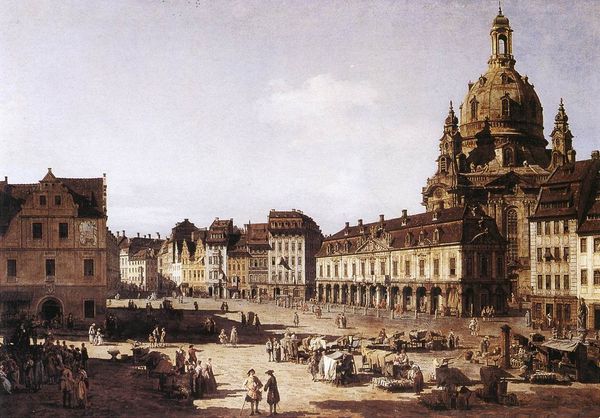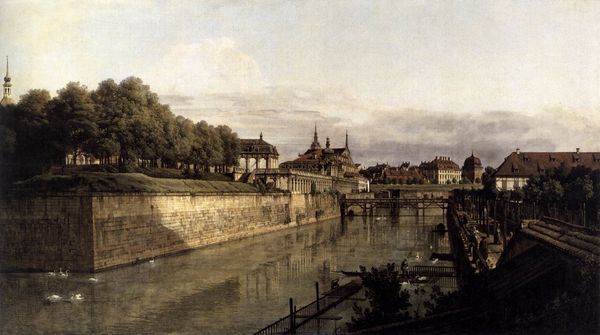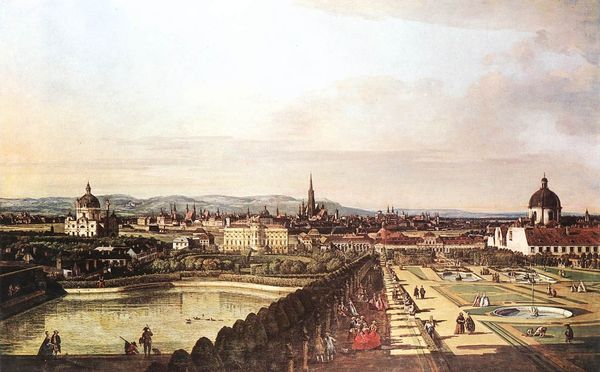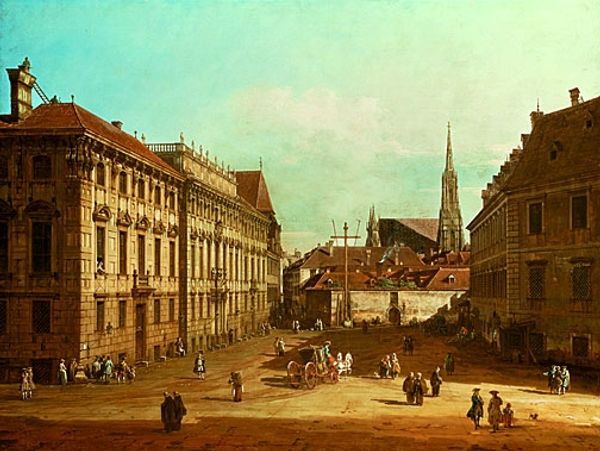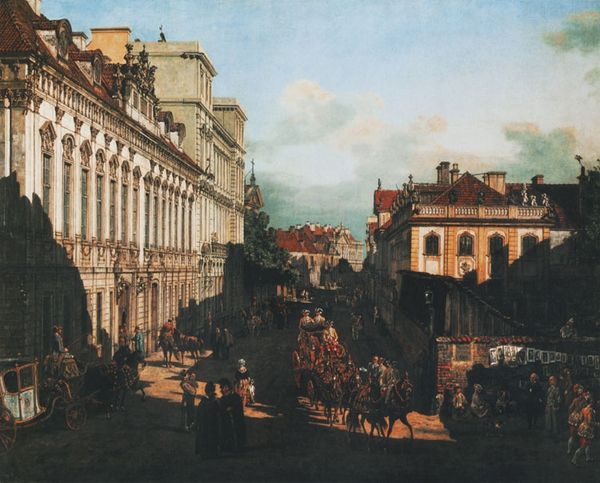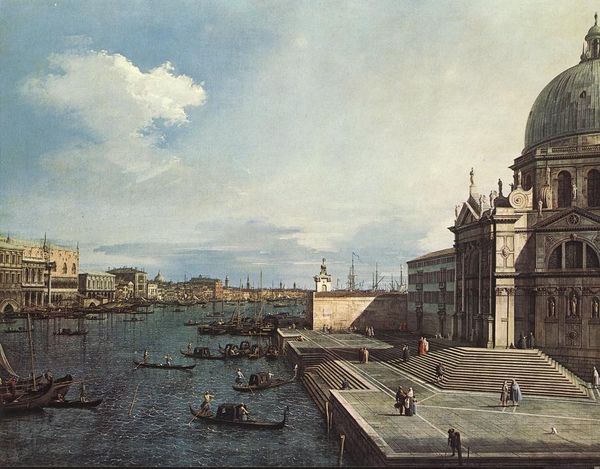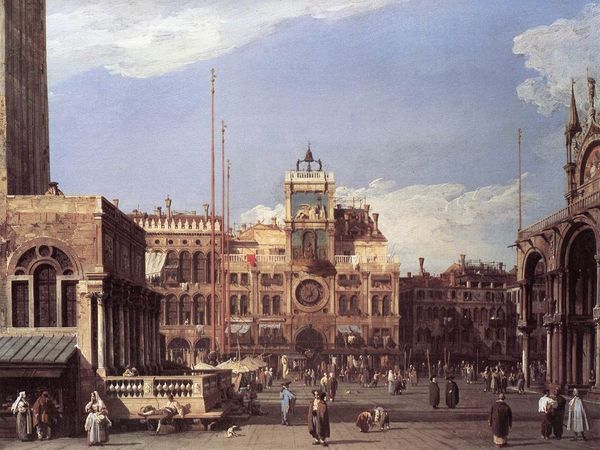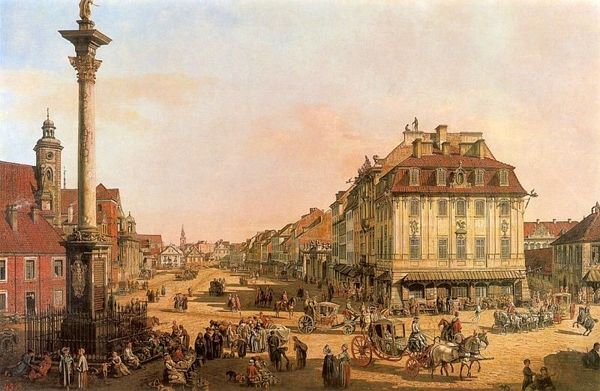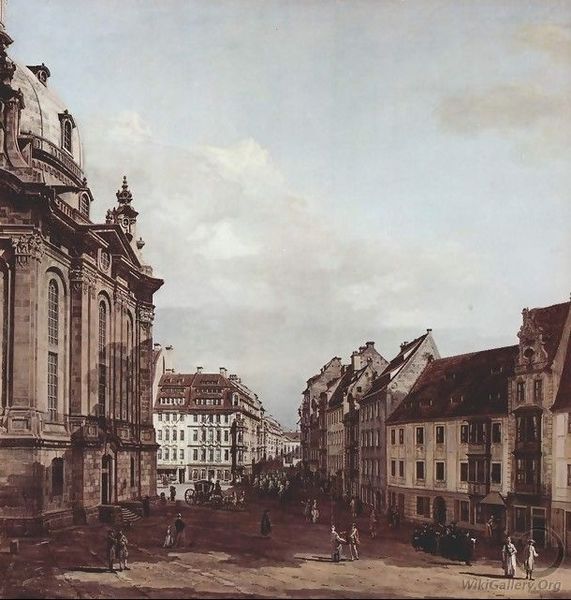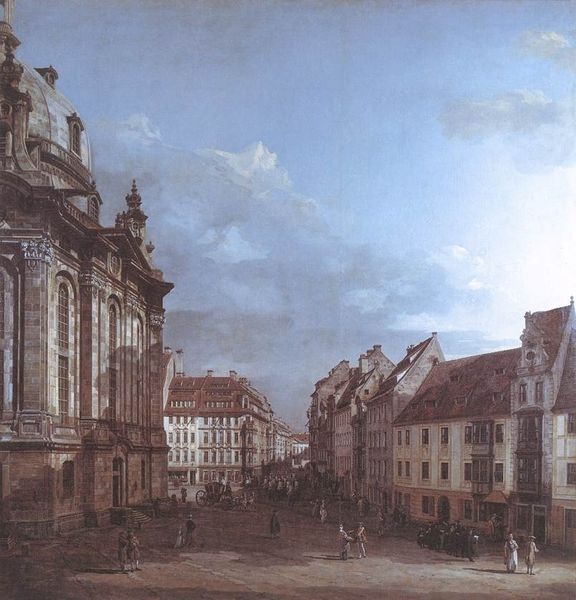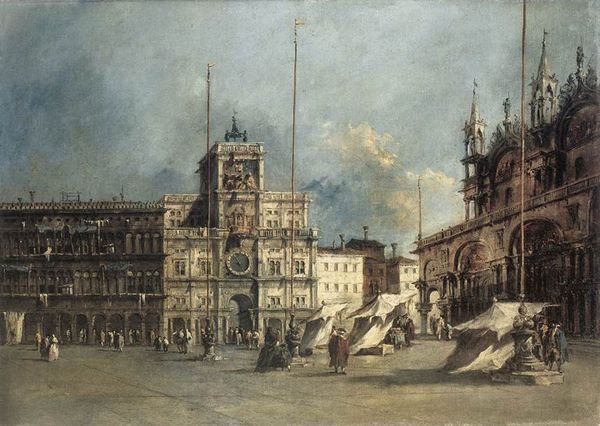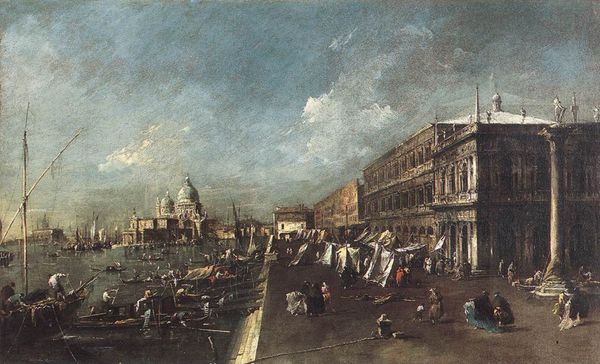
View of Dresden, the Dresden fortifications, moat with a bridge between gate and post mile pillar Wilsche 1750
0:00
0:00
painting, oil-paint
#
baroque
#
painting
#
oil-paint
#
landscape
#
oil painting
#
cityscape
#
genre-painting
#
realism
Copyright: Public domain
Curator: What a tranquil yet structured vista before us. Bernardo Bellotto created "View of Dresden, the Dresden fortifications, moat with a bridge between gate and post mile pillar Wilsche" around 1750, using oil paint to capture this moment. Editor: My immediate sense is one of contained energy. The earthy tones juxtaposed with the orderly architecture create a sort of "calm before the storm" atmosphere. There's so much implicit narrative simmering within the composition, doesn't it seem? Curator: Indeed. It is striking how Bellotto interweaves the militaristic fortification with the leisurely genre painting aspects of the composition. It makes me think of power structures during the Baroque period—the fortress symbolizing authority contrasted with scenes of everyday life and the laboring classes, representing the very people being protected...or oppressed. Editor: The symbols here, particularly those fortifications, evoke ideas of safety, but also constraint. Fortresses, while serving as barriers, are historically fraught with implications of dominance and the limitations imposed on those both inside and outside. The architecture even visually imposes control, a symbolic language of its time. Curator: And the Wilsche post mile pillar? That unassuming structure speaks volumes about empire-building, colonialism, and resource exploitation. Roads and measurements meant consolidating power, especially control over vast territories. Editor: The post hints, perhaps unintentionally, at systems of control, measurement, and even exploitation – connecting distant lands, people and resources to the city center. And what do the reflections in the moat communicate? A certain depth of hidden history beneath the placid surface? Curator: I completely agree! These reflective depths also encourage questions about historical truths, asking whose stories are amplified and whose are submerged. Considering intersectional impacts on the population seems especially apt for genre painting. Editor: The Baroque enthusiasm for classical architectural symmetry clashes interestingly with what I know about the realities for women in that era. This picture embodies societal expectations and hierarchies. Even the artist's position of observation, from above, speaks to inherent power dynamics. Curator: That’s why a critical lens helps expose implicit commentary; how do we see ourselves reflected within these historical impositions of order and protection? Editor: A truly compelling observation on symbols, memory and culture! Curator: A final reflective prompt, indeed. Thanks for lending your thoughtful lens.
Comments
No comments
Be the first to comment and join the conversation on the ultimate creative platform.

